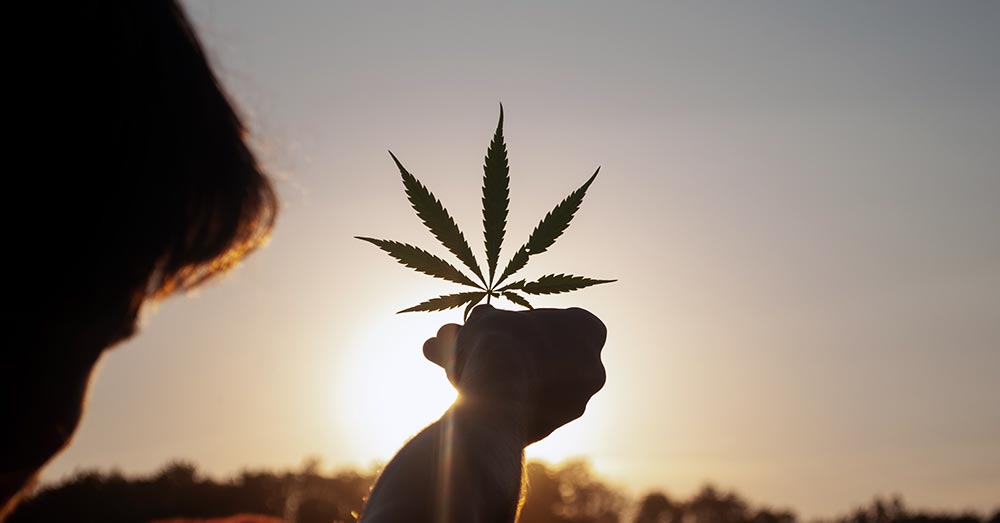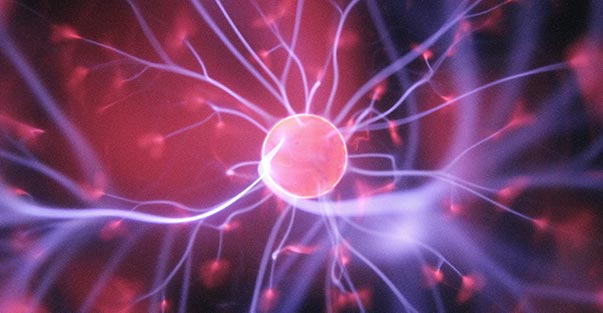 Shop
ShopBroad-Spectrum CBD Softgels
Broad-Spectrum CBD Oil Tincture
Full-Spectrum CBD Softgels
Full-Spectrum CBD Oil Tincture
CBD Gummies
CBD Balm
CBD Dog Treats
All Products >

It wasn’t long ago that I would’ve guessed CBD was some electrical apparatus that truckers communicated with. Tasked with a mandate to learn more about this resinous hemp goodness from the Big Cahoona (Brian Frank) I learned a large amount in a small period of time. Guided by CBD (CANNABIDIOL) A CLINICAL REVIEW by Dr. Delbello and others.
It has been very interesting to watch CBD move from a realm of illegality to fringe almost reluctant use, to what I consider now as mainstream and the topic of widespread global study. Why? The primary reason is effectiveness.
There are myriad anecdotes within my own practice of symptom amelioration from moderate to profound. Only something with potent biochemical effects, operating via a well-developed endogenous system of receptors, has therapeutic potential. And when the chorus of consumer efficacious reaches roar status, well-intentioned, well-funded, and well-designed studies conducted by bright people are inevitabilities.
Effectiveness drives the train and safety allows the trip to continue. According to the World Health Organization, “In humans, CBD exhibits no effects indicative of any abuse or dependence potential…To date, there is no evidence of public health-related problems associated with the use of pure CBD”. Pure…know your supplier!
I would like this article to serve as an update. A glimpse really, into what is transpiring in the CBD world. Not specifics per se but a look at the scope of study and the evolution of CBD, to help you understand how massive this is becoming. And how beneficial a quality CBD product can be in augmenting health and wellbeing. But first, we should review some biology and botany.

All of us possess a system of natural cannabinoid-like compounds and receptors (docking ports of sorts) on the surface of every cell type in our bodies, the endocannabinoid system (ECS). This system resides in high densities in the brain and other nerve tissue, and immune cells. Appetite, mood, pain signaling, and immune response are thus regulated and modulated.
To simplify the ECS, it consists of two endocannabinoids, AEA and 2-AG, which are produced in our bodies; two receptors on cells, CB-1 and CB-2, which AEA and 2-AG interact with; and the protein enzymes that produce and degrade AEA and 2-AG.
It’s interesting to consider how and why we have developed this system. It, like myriad other systems we possess, is a result of evolutionary pressures. We as Homo sapiens, and likely to our extinct brethren of numerous other Homo species, likely interacted with the cannabis plant for over 2 million years. It helped us, we adapted, morphed, advanced. Most likely much of what the ECS is capable of has not yet been elucidated. What we do know is that it will not just interact with our endocannabinoids, but phytocannabinoids (from plants) and exocannabinoids (synthetically produced).
So what does all that mean? Simplistically it means we have developed a massively complex system to enhance our function, survival, and well-being using CBD-like compounds and docking ports for them, located throughout our bodies, that supplemental CBD interacts with. Comprende?
Let’s review the cannabis plant and its bioactive compounds. Cannabis is Latin for hemp. It is a general term for a plant of three “species”: Cannabis sativa, Cannabis indica, and Cannabis ruderalis. This however is a business designation, which is why species is in quotes.
There are numerous opinions about this and people being people get worked up over it. I care to debate absolutely no one about this but the scientific opinion is that Cannabis exhibits monotypia. Mono meaning one and typia meaning type. There is a single species named Cannabis sativa L., and the different “species” are merely subtypes. The “L” stands for Linnaeus. Carolus Linnaeus is the Father of Taxonomy. Maybe the division of the plant is a bit semantical. What does matter are the chemical differences between the plants. Namely drug-type (marijuana) and fiber-type (hemp).
All subtypes of Cannabis possess a wide array of compounds, both cannabinoids, and hydrocarbon terpenes. Of the over 100 different cannabinoids, the two of the largest concentrations and most widely studied are Delta 9-tetrahydrocannabinol (THC for short), and Cannabidiol (CBD).
Fiber-type plants possess high ratios of CBD to THC (CBD:THC as high as 30:1), and by legal definition contains less than 0.3% THC. Drug-type plants obviously contain more THC, on average about 5%, but as high as 20%. Just like apple trees or wheat is bred to produce a certain yield, so too is Cannabis selectively bred to produce the desired profile, and there are more than 700 different cultivars (plant varieties of Cannabis).
CBD and other cannabinoids are oils. They are lipids, and thus not soluble in water. As mentioned, there are very many different cannabinoids. There is also a completely different class of compounds known as terpenes. These are hydrocarbons. They comprise the bulk of resin from Conifer trees and are highly flammable. The individual constituents and their relative concentrations are accurately quantifiable using gas chromatography. What is not known is what the heck are they all doing in our bodies!
Dr. Delbello outlines a study that I have obtained and read comparing purified CBD vs. Cannabis extracts (mixture of compounds). There were a considerably higher number of patients reporting improvement using the extracts. Furthermore, the average dose of the extracts was over 4 times lower than the purified CBD dose and had fewer adverse effects.
These findings certainly raise questions about potential synergy between the components. Synergy is a well-known phenomenon describing the enhanced effect of combining more than one agent when compared to the effect seen from the agents individually. In relation to Cannabis, synergy was termed the “entourage effect” in a 1998 study.
The internet is filthy with references to the entourage effect, but that study showed only an association of enhanced effect from one chemical on another. In no way has an extensive scientific investigation been done or true causality been established. “Full spectrum CBD” is a common term of trade and signifies that there has been less processing and that a mixture of compounds exists.

And now for a refresher on the legalities of hemp. The Brookings Institute and The National Law Review had excellent and recent reviews of the Farm Bill and hemp's legalization status. All cannabis plant types were effectively made illegal in 1937 and formally made illegal in 1970 under the Controlled Substances Act. But recently a change was afoot and the 2014 Farm Bill extended hemp research recognizing its “importance, diversity, and opportunity”.
Senate Majority Leader Mitch McConnell, from the fertile, hemp-happy soils of Kentucky, championed hemp reform legislation under the 2018 Farm Bill. President Trump signed it on December 20, 2018. It defines hemp as any part of the Cannabis Sativa L. plant that contains <0.3% THC by weight.
Hemp is now like any other agricultural commodity, heck it’s a mainstream crop. This is great news for hemp farmers, who now have protection again evil forces conspiring against hemp, like climate and pestilence. The legalization of CBD however is far from being unfettered. It is exempted from being a Schedule I drug (like cocaine or meth) if and only if its production follows numerous regulations. The take-home is that under last year’s Farm Bill, CBD will be much more available and legal but knowing the legitimacy of your producer is critical.
The United States Food and Drug Administration (FDA) has issued statements clarifying its role as a result of the Farm Bill changes. ANY cannabis product whose marketing makes medical claims must be approved by the FDA before it can be sold. If you know anything about the medicine approval process you know that it’s daunting. Expensive and time-consuming are understatements.
And now, the state of research affairs. Much of what I read just a few years ago involved primarily the differentiation of different compounds within cannabis (CBD, THC, and others) and their physiology involving the endocannabinoid system, brain, and other tissue receptors, how CBD is processed and metabolized, and how it affects neurotransmitters like dopamine.
This is all interesting and I think legitimizes CBD as a potent bioactive chemical. But what do we really care about? Is it going to help my fillintheblanksymptoms?! More recently there is an explosion of CBD studies and clinical trials.
First the small-scale trials on some lucky rodents. As an example, Hammell et al in 2016 performed a CBD study in rats, published in the European Journal of Pain. “Transdermal CBD gel significantly reduced joint swelling, limb posture scores as a rating of spontaneous pain, immune cell infiltration and thickening of the synovial membrane in a dose-dependent manner”. This means that the rats felt a hell of a lot better.
As a result of studies like this, open-label trials on humans followed. Open-label means that both the study subject and the patient know they’re using the experimental medication. These studies are easier and cheaper to perform but might allow for “bias” to occur through the placebo effect. Yes, expectations CAN influence outcomes.
Although it will be quite sometime before a large enough patient use community exists and funding is provided for longitudinal multi-decade CBD study, many quality well-designed trials have been completed, and are ongoing including double-blinded, placebo-controlled studies where the risk of study bias is minimized. Research conducted in this manner is what drives respect from the medical community and can invoke real change within the industry.

This burgeoning movement of research is driven by numerous factors. The discovery of our innate endocannabinoid system and the 2018 FDA approval of Epidiolex certainly helped. But I feel that grass-roots consumer use and vocalization of efficacy following the legalization of hemp via the Farm Bill has been the principal driver of the quality studies I read today.
To date, only one CBD medication is FDA approved, Epidiolex, for the treatment of two rare forms of seizures. Dronabinol (Marinol) with its two indications approved in 1985 and 1992 is a synthetic cannabinoid with THC qualities. It is approved for nausea and vomiting due to chemotherapy, and more recently for the treatment of weight loss associated with AIDS. Nabiximols (Sativex) is not approved in the US but is used in numerous other countries as an anti-inflammatory drug treatment against multiple sclerosis muscle spasms. It is a 1:1 ratio of CBD and THC.
The FDA needs much more information before it can begin to monitor and regulate CBD in an effective means. In 2016 the 21st Century Cures Act was passed, which allows for study participants and product users to report data for collection via mobile devices. The cannabis-focused research company ValidCare created an app called CBD+me which allows users to report on a host of CBD-related indices.
These metrics are collected in a low-cost means and provided to the FDA, which does not regulate the safety and purity of dietary supplements but does regulate medications. The ultimate outcome hopefully being solid data for the FDA Over-the-Counter Monograph review process to regulate the labeling, manufacturing, safety, and dosing. This all is designed to protect the consumer and guide the medical professional. And advance CBD’s metamorphosis from The Wild West to the mainstream.
Dr. Melinda Ring at the Northwestern Medicine Osher Center for Integrative Medicine states “The lack of regulation means anything online can be easily compromised, and quality can vary widely. Read the reviews to ensure it has been tested, the ingredients are verified and there aren’t any contaminants”.
Some examples of the scope of recent published CBD studies:

Many, many more studies are underway looking at the possible treatment of myriad conditions with CBD. Some include immune function, Androgenetic Alopecia (hair loss), nerve health, joint pains, COVID-19 infections, panic disorder, Diabetic Peripheral Neuropathy, and dental pain. Heck, even “flow state” is being investigated. This perfect symphony of serotonin, dopamine, and endorphins results in a natural high, and ideal performance for athletes, musicians, and other creatives. Users of CBD have reported a much easier transition into a flow state, and a study is underway.
The psychology department at Syracuse University has contributed to CBD research. They previously performed the first systematic review and meta-analysis of research examining CBD and pain. Earlier this year they published their data from the first experimental CBD pain trial. Addressed was the looming question regarding CBD’s effects on pain. Is it true pharmacological effects or placebo effects?
Study participants were subjected to experimental heat pain and their nervous system responses were quantified. Then CBD or placebo was administered and pain responses re-assessed. But the study went a step further. Researchers manipulated the information given to the study participants about which substances they received. And they weren’t exactly honest. In some cases, study subjects were told they received CBD when they actually received a placebo and vice versa.
The results were “remarkable and surprising”. Pain measure improvements were found by the direct chemical effects of CBD but also the psychological effects of just expecting that they had gotten CBD.

Outlined above is just a glimpse of what is transpiring in the exciting world of CBD. Why is it exciting? Because there is just such potential. Many sources feel that given cannabis efficacy for myriad ailments and its safety profile explosive growth will continue, and is expected to reach $50 billion value in the United States by 2026.
Sweeping legal transformations have occurred, and attitudes towards cannabis are evolving. The new societal context in which cannabis resides raises ever more questions. These cultural, medical, legal, regulatory, economic, and epidemiological questions need to be addressed in a multidisciplinary and evidence-based manner.
Many agencies, societies, and individuals are doing this work, actively seeking to answer these questions. In my opinion, the safe and effective use of cannabis need not wait. I encourage you, as I do my patients, to inform yourselves and pursue that which you feel will enhance your health and wellbeing. Cannabis for many is providing that in spades.